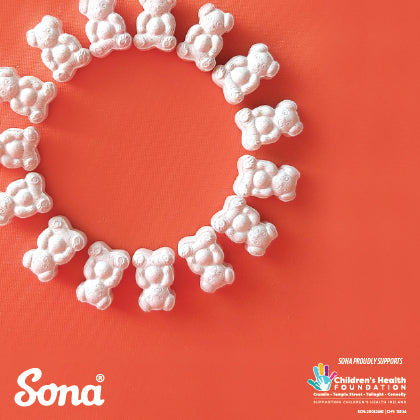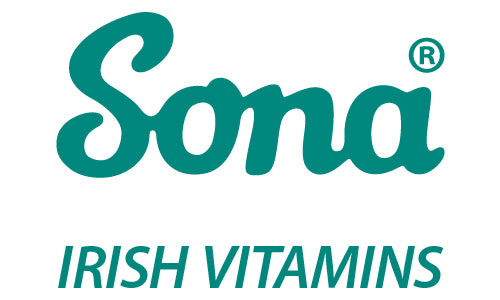
Children require an abundance of energy and nutrients from food to keep them healthy, happy, and active every day. A balanced, and varied diet is crucial for the long-term growth and development of a child.
Some of the benefits of healthy eating include:
- The promotion of normal growth and development of your child.
- The availability of sustained energy throughout a child’s busy day.
- Helps to maintain a healthy weight.
- Aids the formation of healthy bones and teeth.
- Prevents blood sugar dips and promotes normal mood.
Below we describe the role of some important nutrients to be included in a child’s diet, including recommended portion sizes and sources of each nutrient most suitable for your child.
Protein
Due to their size, children require a much lower quantity of protein than adults. However, an adequate portion of protein in each meal is crucial to support their rapid growth and development throughout childhood. Portion sizes for protein will depend on your child’s age, size, and activity levels, however basing it off the size of your child’s palm of their hand is usually sufficient.
Examples of protein sources include fish, chicken, turkey, beans, eggs, milk, yoghurt, and cheese.
Fibre is excellent for maintaining healthy bowel movements and preventing constipation in children. However, a study found that 9 in 10 children do not receive enough fibre in their diet.
According to the British Nutrition Foundation, fibre rich foods which are useful for children include fresh or dried fruit, pulses like chickpeas or lentils, any vegetables, potatoes (including the skins), high fibre breakfast options (porridge, all bran, low sugar alternatives), nuts and seeds. Ensuring your child consumes enough water and fluids can ensure that the fibre can aid the movement of fibre through the digestive tract.
Calcium and Vitamin D play an important role in childhood, helping to form and strengthen their bones and teeth. It also helps to prevent rickets, the deficiency disease of these nutrients. Food sources of calcium and vitamin D include milk, cheese, eggs, figs, tofu, and spinach.
While we can get most of our calcium from food, it is not as easy to get as much vitamin D from food. In general, we get most of our vitamin D from sunshine hitting our skin. However, in Ireland, due to the lack of sunlight, we do not get as much as we need to from the months of October to March. It is now recommended for children to supplement with vitamin D during these months to ensure adequate intake. Here at Sona, we have a range of vitamin D supplements with different dosages depending on the child’s age which you can find on our website.
Iron Iron makes oxygen rich blood and with low levels, children may become fatigued and develop anaemia. It also plays a role in brain development, growth, and the ability to fight infection.
Iron from meat is much easier and more plentiful than the iron in plant sources, so consuming a mix of the two is encouraged. Sources include red meat, fish, eggs, tofu, cashews, lentils, and green leafy vegetables. Including portions of these foods in your child’s diet will make it easy to ensure they are receiving adequate amounts. Pairing these foods containing vitamin C (fruit and vegetables) will aid the absorption of iron.
Deficiency
Like any adult, there are times when a child may require some additional support in their diet and may be at a higher risk of deficiency. This may include:
- Children who are fussy eaters.
- Children with allergies or food intolerances, e.g., coeliac disease.
- Children who follow a special diet, e.g., vegetarians or vegans.
- Children who suffer from a chronic illness.
In this instance, it may be recommended that a child includes a supplement in their diet to ensure they are receiving adequate nutrients every day, particularly if they have been diagnosed with a deficiency.
At Sona, we supply a wide range of children’s and babies supplements, including Sona’s MultiPlus Junior Chewable - Complete Multivitamin and Multimineral for Children which provides a comprehensive supply of vitamins and minerals essential for growing bodies.
Sona is a proud sponsor of the Children’s Health Foundation (CHI), who are committed to helping bring about real and long-lasting change for the sick children of Ireland and their families, who attend CHI hospitals and urgent care centres every day.
References:
Aurangzeb, B., Leach, S. T., Lemberg, D. A., & Day, A. S. (2010). Nutritional status of children with coeliac disease. Acta Paediatrica, 99(7), 1020-1025.
Bartleman, J. (2019). Infant and child nutrition. Medicine, 47(3), 195-198.
Bartolo, M. C. (2014). Nutrition in childhood.
British Nutrition Foundation, & British Nutrition Foundation. (1995). Iron in infancy and childhood. Iron: Nutritional and physiological significance The Report of the British Nutrition Foundation’s Task Force, 93-105.
Edwards, C., Xie, C., & Garcia, A. (2015). Dietary fibre and health in children and adolescents. Proceedings of the Nutrition Society, 74(3), 292-302. doi:10.1017/S0029665115002335
Gidding, S. S., Dennison, B. A., Birch, L. L., Daniels, S. R., Gilman, M. W., Lichtenstein, A. H., ... & Van Horn, L. (2005). Dietary recommendations for children and adolescents: a guide for practitioners: consensus statement from the American Heart Association. Circulation, 112(13), 2061-2075.
Larson-Nath, C., & Goday, P. (2019). Malnutrition in Children With Chronic Disease. Nutrition in clinical practice : official publication of the American Society for Parenteral and Enteral Nutrition, 34(3), 349–358. https://doi.org/10.1002/ncp.10274
Moshfegh, A., Goldman, J., & Cleveland, L. (2005). What we eat in America, NHANES 2001-2002: usual nutrient intakes from food compared to dietary reference intakes. US Department of Agriculture, Agricultural Research Service, 9(10.1096).
Noimark, L., & Cox, H. E. (2008). Nutritional problems related to food allergy in childhood. Pediatric Allergy and immunology, 19(2), 188-195.
